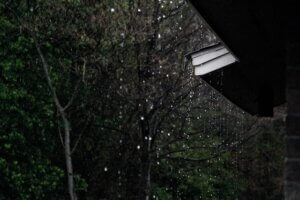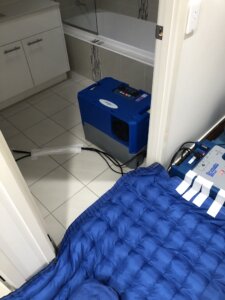Comparing Water Removal Techniques: What Works Best and When
Comparing Water Removal Techniques: What Works Best and When
Key Takeaways
- Effective water removal is crucial for minimizing damage and restoring properties after water intrusion.
- The choice of water removal technique depends on the extent of water damage, the type of property, and available resources.
- Manual methods and wet vacuuming are suitable for small areas with minimal water, while sump pumps and professional services are better for large-scale flooding.
- Dehumidification and air movement are essential for drying out interiors and preventing mould growth after the initial water removal.
- Timely and informed action, choosing the appropriate water removal method, is key to effectively managing water damage situations.
Summary
This article compares various water removal techniques, emphasizing their suitability based on the scale of water damage and property type. It highlights manual methods, wet vacuuming, sump pumps, dehumidification, and professional services, underscoring the importance of timely action and the right approach to minimize damage and prevent mould growth. Choosing the correct method is crucial for efficient water damage restoration and property protection.
In the realm of property maintenance and restoration, the significance of effective water removal cannot be overstated. Whether due to natural disasters, plumbing failures, or any unforeseen accidents, water damage can pose a serious threat to the integrity of buildings and the health of their occupants. Understanding the most effective water removal techniques and knowing when to employ each is crucial for minimizing damage and restoring properties efficiently. This comprehensive guide will explore various water removal methods, offering insights into their applications, benefits, and limitations to help you make informed decisions.
Water Removal Techniques
Manual Water Removal
Manual water removal is often the first step in addressing water intrusion. This method involves the use of mops, buckets, and towels to remove water. It is most effective for small areas or when the water level is minimal.
- Benefits: Cost-effective and immediate.
- Limitations: Labour-intensive and not suitable for large-scale water intrusion.
Wet Vacuuming
Wet vacuuming is a step up from manual removal, utilizing wet-dry vacuums to suck up water more efficiently.
- Benefits: Faster than manual methods and can handle larger volumes of water.
- Limitations: May not be effective for deeply saturated surfaces or standing water above vacuum capacity.
Sump Pumps
Sump pumps are essential for removing large volumes of water, particularly in basements or areas prone to flooding.
- Benefits: Highly effective for large-scale water removal and can be automated.
- Limitations: Requires installation and is dependent on electricity.
Dehumidification
Dehumidification involves using dehumidifiers to remove moisture from the air, walls, and furnishings, crucial for preventing mould growth and further damage.
- Benefits: Effective for drying out interiors and hidden moisture.
- Limitations: Slower process and requires electricity.
High-Volume Fans and Air Movers
These tools are used in conjunction with dehumidifiers to circulate air and expedite the drying process.
- Benefits: Speeds up drying time significantly.
- Limitations: Best used in combination with other methods for optimal results.
Heating
Applying heat helps to evaporate moisture more quickly, often used in tandem with dehumidification and air movement.
- Benefits: Effective for drying out building materials.
- Limitations: Must be carefully monitored to avoid damage to sensitive materials.
Professional Water Extraction Services
For extensive water damage, professional water extraction services offer comprehensive solutions, employing a combination of the techniques mentioned above, along with specialized equipment.
- Benefits: Efficient and thorough removal of water and moisture.
- Limitations: Cost may be higher than DIY methods, but the effectiveness and speed can mitigate further damage costs.
Choosing the Right Technique
Selecting the appropriate water removal technique depends on several factors, including the extent of water damage, the type of property affected, and the available resources. Here are some guidelines:
- For minimal water intrusion in small areas, manual removal or wet vacuuming may suffice.
- In cases of moderate to severe flooding, especially in basements, sump pumps and professional extraction services are more appropriate.
- To address residual moisture and prevent mould growth after water has been removed, dehumidification and air movement are essential.
Understanding the strengths and limitations of each water removal technique allows property owners and managers to respond effectively to water damage, minimizing its impact and restoring spaces to their pre-damage condition. It’s crucial to assess the situation quickly and choose the most appropriate method to ensure the safety and integrity of the affected property.
In the face of water damage, timely, informed action is key. By comparing water removal techniques and knowing what works best and when, you can ensure a swift and effective response to any water intrusion event, protecting your property and health from the potential consequences of water damage.
FAQs
What is the most effective water removal technique for my situation?
The most effective technique depends on several factors, including the extent of water damage, the size of the area affected, and whether the water is clean or contaminated. For minor spills, manual methods or wet vacuuming might suffice. For larger floods, especially with standing water, sump pumps or professional water removal services are recommended.
How long does it take to completely remove water and dry out a property?
The timeline can vary widely depending on the severity of the water damage, the methods used for water removal, and the conditions of the affected area. Generally, water can be pumped out or vacuumed relatively quickly, but the drying process can take several days to weeks, especially if structural elements are wet.
Can water removal prevent mould growth?
Yes, timely and effective water removal followed by thorough drying can significantly reduce the risk of mould growth. Mould thrives in moist environments, so eliminating excess moisture is crucial. Dehumidification and proper ventilation are key steps in preventing mould after a water damage event.
Why Choose AllAces?
AllAces Cleaning & Restoration has over 35 years of industry experience handling extensive water removal services across Brisbane, Sydney, Melbourne, and surrounds. Our IICRC-certified technicians are highly trained and experienced to ensure the return of a pre-loss condition.



